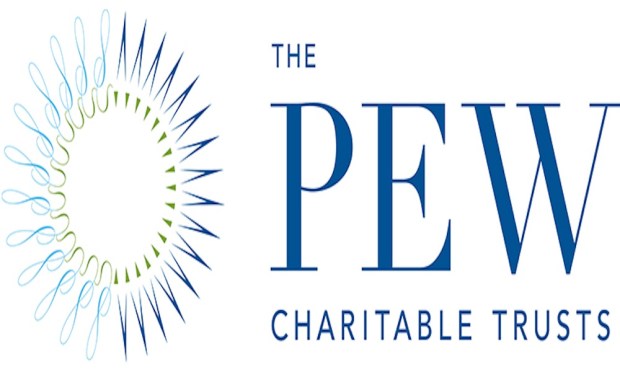Pew Pushes Installment Loans As Regulated Payday Alternative

Short-term lending – specifically, payday loans – have attracted a lot of attention in recent years, from the media and from the regulators.
A little more than a year ago, the CFPB (now also known as the BCFP) dropped its final version of its new payday lending regulations – though, as it turns out, “final” was probably not the right word to describe them. They are currently being redrafted and are expected to re-drop in February.
For all the interest and attention that payday loans and other forms of very short-term lending draw, however, far less attention is paid to installment loans, according to new data released by the Pew Charitable Trusts.
Which, the research group notes, is perhaps a bit surprising, considering how large of a footprint installment lending already has in the United States – both geographically and in terms of funds loaned.
There are approximately 14,000 individually licensed physical storefronts spread across 44 states offering these loans, according to Pew. The largest lender in the category has at least one branch within 25 miles of 87 percent of the U.S. population. The products are used by approximately 10 million borrowers each year.
Moreover, given that the new payday lending regulations under consideration – as well as many new state regulations – are somewhat friendlier to installment loan products for consumers looking for smaller dollar amounts, it may be the case that installment loans are about to become much more widespread, and perhaps in need of some additional scrutiny.
Which Pew is providing, for at least the first round – looking at how installment loans help and when they don’t, and what they believe should be the governing attitudes toward their use in order to be a useful tool for consumers in need of a fast cash infusion, as opposed to a way to make an expensive problem a financially ruinous one.
Payday vs. Installment loans
Like payday loans, installment loans are generally a non-bank credit product pitched to low- to moderate-income consumers who have access to a checking account, but usually don’t have extensive access to bank-based credit products like cards or personal loans.
The main difference between the two forms of non-bank subprime cash lending – as their names imply – is the time a customer is given to pay a loan. A payday loan is generally taken out and must be repaid in full on the customer’s next payday. The customers must almost always give access to their checking account so the full payment can be debited on the agreed-upon date.
Installment loans do not universally require access to a consumer’s checking account (though direct debit of payments is usually offered and recommended), and the payments on the loan are spread out over a four- to 60-month term, with the customer making the same payment each month for the agreed-upon term. According to Pew, installment loans have much to recommend them as an alternative to payday lending.
First, they are generally more manageable for the borrower: According to Pew’s data, 85 percent of installment loan customers report their monthly payments consume 5 percent or less of their monthly income.
“Previous research [by Pew] shows that monthly payments of this size that are amortized — that is, the amount owed is reduced — fit into typical borrowers’ budgets and create a pathway out of debt,” the report noted.
The loans are also generally less expensive than their payday counterparts. A $500 loan paid over three or four months was found to be three to four times less expensive than using credit from payday, auto title or similar lenders.
Most importantly, Pew noted, the installment model is better constructed to offer a win-win for both the borrower and the lender. While payday loans, by design, tend to force consumers into a series of escalating debts, installment loans are designed to profit their underwriter without counting on the consumer to fail their way into paying higher fees.
“If borrowers repay as scheduled, they can get out of debt within a manageable period and at a reasonable cost, and lenders can earn a profit. This differs dramatically from the payday and auto title loan markets, in which lender profitability hinges on unaffordable payments that drive frequent re-borrowing,” noted Nick Bourke, director of Pew’s consumer finance project.
But, Bourke noted, installment loans can only live up to their potential to be a good tool, as states still have a fair amount of work to do on their law to make sure “unsafe lending practices that put borrowers at unnecessary financial risk” are taken out of the equation.
Pew’s Recommended Changes
According to Pew’s data, state laws often allow installment lenders to engage in two practices that it deems harmful: allowing lenders to attach the sale of other ancillary products to the loan (most notably credit insurance) and allowing lenders to charge origination or acquisition fees.
The fees and add-ons, argues Pew, mean the APR the customer is quoted is often lower than what the report calls the “all-in APR.”
“The discrepancy makes it hard for consumers to evaluate the true cost of borrowing, compare prices and stimulate price competition,” the report notes.
The report also notes that while installment loans could help consumers out of debt if they use the products correctly (such as to pay their monthly installments and extinguish the debt), many consumers are not actually using the loans that way. According to the data, only about one in five installment loans are issued to new borrowers, compared with about four in five that are made to existing and former customers. The data also finds that 66 percent of installment loans are consecutively refinanced each year – meaning, according to Pew, that indebtedness is lengthened, and the costs of borrowing kick up a lot, particularly if new organization or upfront fees are applied.
Pew noted it would like to see state regulations require more transparency on pricing, and to require that the sale of ancillary products is separate from the issuance of credit.
The report also recommends legislations set “transparent maximum allowable costs that are fair for borrowers and viable for lenders.”
